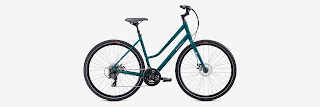E-mail recently sent to Sportsnet, media conglomerate responsible for broadcasting all things Blue Jays:
---------------------------------------------------------------
Hello,
I'm writing to express my outrage at Sportsnet's decision to axe the Blue Jays radio broadcasts. I've been a Jays fan since 1977, and my primary means of processing information is auditory. As such, I don't even own a TV. I fell in love with the game on the radio—first with Tom Cheek and Early Wynn, then the legendary tandem of Tom and Jerry. Both are sorely missed, but in recent years I've enjoyed the quality work of Ben Wagner and Mike Wilner.
For those of us who aren't visual or are visually impaired, radio isn't a frill or an add-on. We need a dedicated radio broadcast in order to follow the game. Your stated reason for ditching the radio broadcasts (COVID-related travel concerns) simply doesn't pass muster. Ben and Mike did a phenomenal job in 2020 broadcasting off monitors from a Toronto studio. Don't kid yourselves. We, the fans, see this decision for what it is: a short-sighted cost-cutting measure.
Though you may not know or believe it, baseball is made for radio. The slower pace of the sport allows the broadcaster to weave into their commentary stories, stats, and baseball history. A great radio voice paints a picture for the listener, enabling us to effectively "be" at the ballpark through the magic of sound and experience the timeless feel of this grand old game.
Alas, as the 2021 spring slate begins, I have no way of following my team. The radio booth lies empty for the first time since 1976. Many Jays games have no radio coverage at all, and those that do feature the opposing team's broadcast. Obviously, their focus is not on the Blue Jays, who are just "the other team" on the field. Lest you think this won't affect my fandom, know that I'm seriously considering switching allegiances to one of the other 29 teams. Unlike you, they recognize the value for money that radio provides.
You also need to understand that I'm not a lone voice. I draw your attention to this petition, which has been signed by over 2,100 irate Blue Jay fans: https://www.change.org/su/p/rogers-media-keep-toronto-blue-jays-radio-broadcasts-alive/f
I urge you to end this travesty and restore to the airwaves a dedicated Blue Jays radio broadcast. Canada's only major-league team deserves better than bush-league media coverage.




